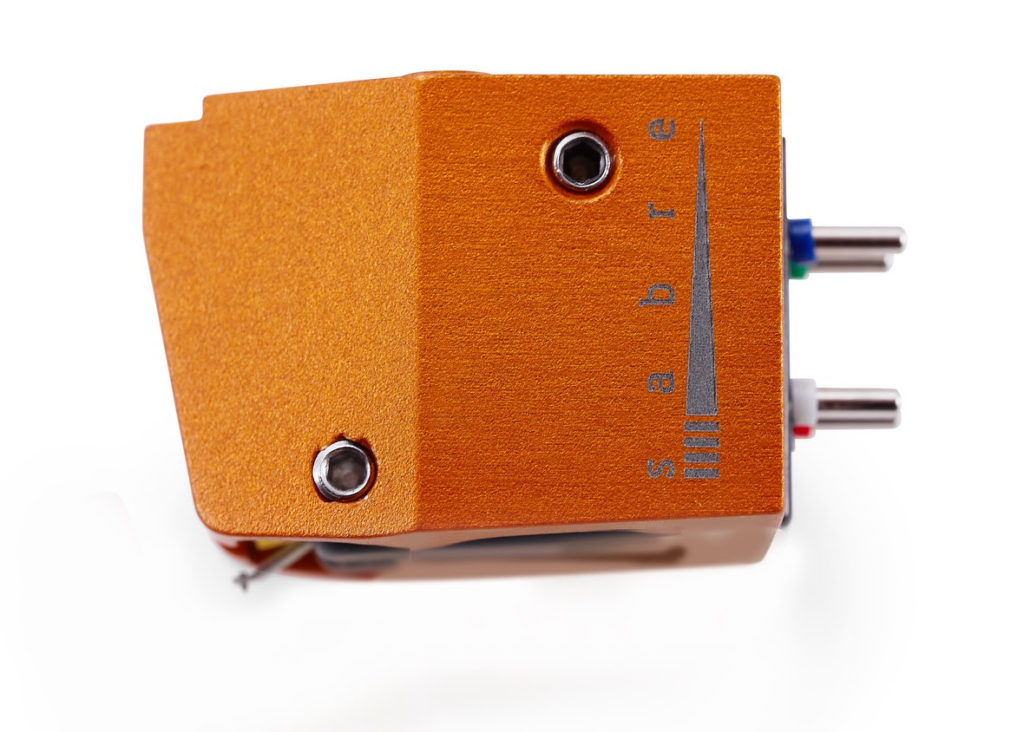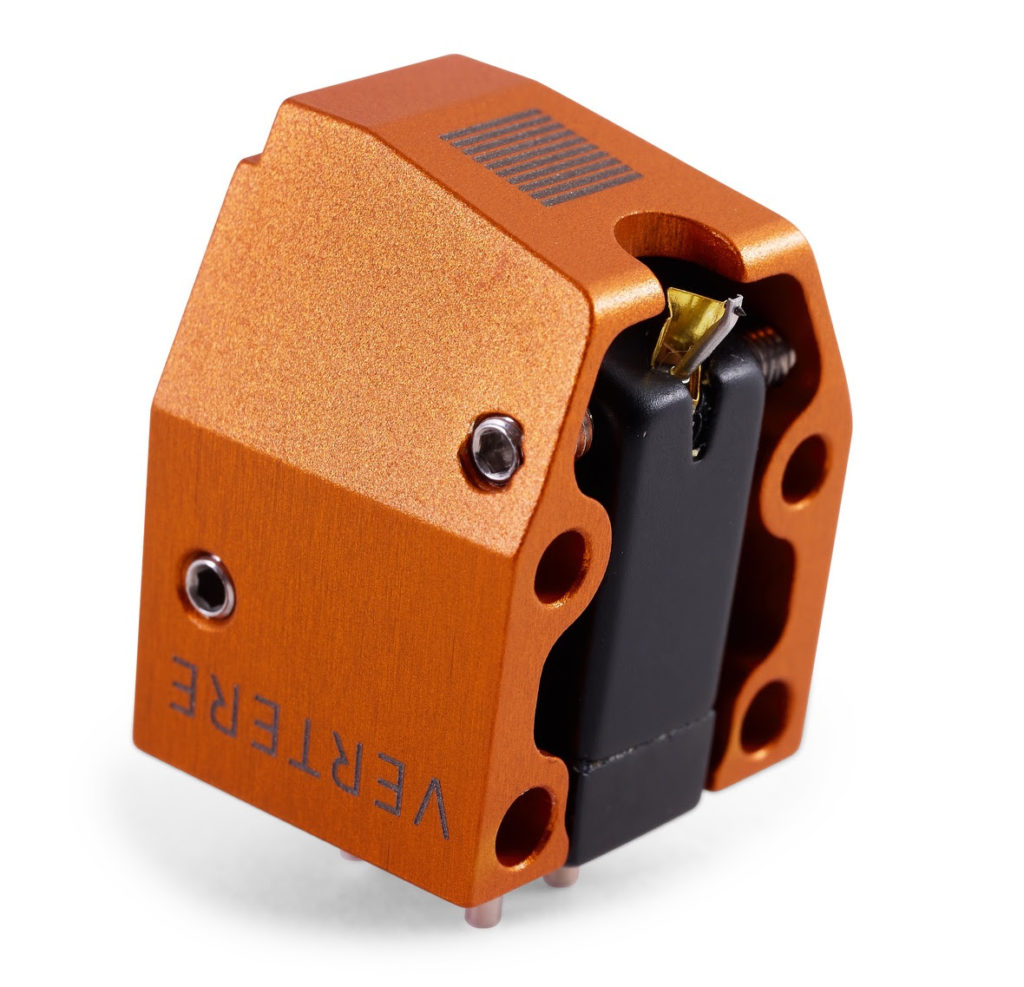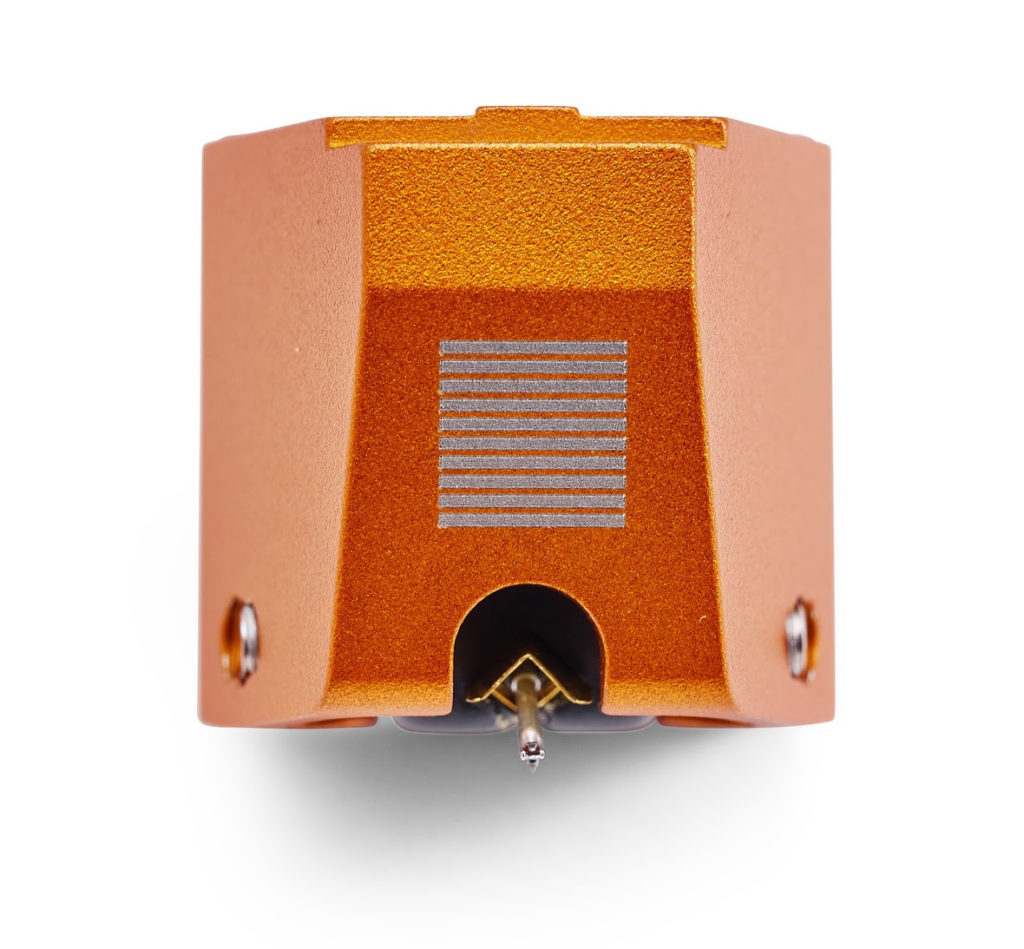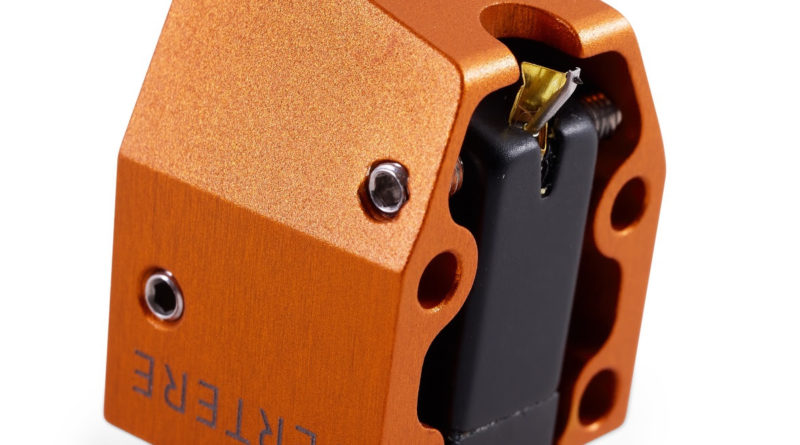Vertere Acoustics Launches New Sabre High-End MM Cartridge
The same outfit as had me marvelling earlier, has a new Moving Magnet cartridge out. Here is their news, which makes me really want to get and hear this stuff. Besides, last time I was so intrigued that I telephoned and ended up talking with Touraj, who is of course, an utter genius and you can tell!
Vertere Acoustics London. 03 June 2021. Touraj Moghaddam, Vertere’s founder and chief designer announced a new high-end Moving Magnet cartridge Sabre at today’s launch. Vertere’s new high-end Sabre Moving Magnet Phono Cartridge delivers an uncompromising musical experience. Sabre is designed and manufactured to exacting standards.

Sabre sits between the budget, but surprisingly musical, Magneto MM cartridge and the beautiful and award-winning Mystic MC cartridge. Sabre has a retail price of £845, $1199 and €1148 in the UK, USA and Europe respectively.
Upgrading from a budget moving magnet cartridge involves some difficult choices. The first and probably the most obvious choice is Moving Magnet or Moving Coil. Moving Coil is traditionally seen as the better choice, but it requires an additional 20db or more gain. Budget phono stages often struggle to do this well, if at all. The upgrade involving a new cartridge and a new MC phono stage could be expensive.
MM cartridges have in some ways suffered from the majority having a reputation of being a bit lightweight and scratchy sounding. Sabre is not such a cartridge as a demonstration will conclude.
Sabre is detailed, dynamic and full-bodied and, most importantly, is highly musical and addictive.
Sabre high-end Moving Magnet cartridge in bullets
- Aluminium alloy body CNC precision machined from solid
- The body is mass-tuned to the generator for optimum support and control of unwanted mechanical vibrations
- Sabre utilises an Alnico magnet with its suspension individually positioned and aligned for maximum musical performance
- The generator is uniquely fixed to the body via four ‘spike’ screws precisely positioned and torqued for maximum rigidity and performance
- No adhesives used in mounting the generator to the cartridge body 1
- The Micro-Elliptical diamond stylus tip is bonded to an aluminium tube cantilever designed for maximum tracking ability without compromising high-frequency response or increased surface noise
- Threaded body to accept the supplied stainless steel thumbscrews for correct coupling of the cartridge body to the tonearm headshell
- Three specifically designed contact areas machined into the top of the body that provide the exact mechanical coupling required
- Alignment ridge on the front top that assists mounting Sabre to any Vertere tonearm
- Bonded through diamond assembly maximises alignment and rigidity
- Wideband frequency response of below 15Hz to above 25kHz
- Output of 4.0mV will provide a lifelike dynamic range with depth and precision

| Background to Vertere Cartridge Design Unlike the DG-1 record player, the Sabre high-end Moving Magnet Cartridge is not revolutionary – no wheels have been reinvented – Sabre is a combination of experience, common sense, science and a little art. It is, of course, hand-built in London into a stunning orange anodised finished, machined-from-solid, aluminium body. Once the decision has been made on the motor system depending on the target market and to a small extent personal predilection, the key to designing – for all but the most extreme of high-end cartridges – is to balance the design parameters: to deliver a cartridge that stays in the groove, retrieves the maximum musical information and is least affected by old or damaged records.There are, of course, extremes in the world of hi-fi – extremes, where the designer optimises one parameter almost to the exclusion of others – and these products are often the most talked about as they are loved or detested in spades. But this is not the Touraj way: he doesn’t want a system that favours closed miked jazz over rock or symphonic over punk. He wants a system that allows most records in a collection to be played and enjoyed. In his view, a hi-fi enthusiast with a small record collection just does not have the right system yet. When Vertere launched the DG-1, Touraj said: “The job of a record player is straightforward and very linear. It has to allow the most accurate measurement of something going past the stylus and throwing it from side to side over 1000 times every centimetre.” The situation hasn’t changed, except in this story. The focus is the cartridge, including the cantilever and diamond stylus, which is the part that’s being thrown about over 1000 times every centimetre of record travel. The Shiraz introduced in 1987 was the first cartridge that used no adhesives to clamp the generator in place and instead used three ‘spike’ screws to the main body. Years later, EMT, who supplied the Shiraz generator, asked Touraj if they could use the idea in their cartridge – He said yes, and they do now. Of course, Sabre’s execution is different to match the new generator and its machined aluminium body, but the idea derives from Touraj’s development back in 1987. | |
| Touraj explains the source of some of his background knowledge “Our collaboration with music industry engineers has given us invaluable insights into the art of cutting. This knowledge has enabled us to advance our record player design in many ways to extract the maximum from vinyl records. For example, with his recent remixes of the Beatles albums, Giles Martin – son of the late Sir George – used a Vertere MG-1 record player, including SG-1 tonearm and PHONO-1 preamplifier throughout to check and approve the acetates and the test pressings.And we’ve worked closely with the multi-award-winning mastering engineer Miles Showell: since February 2017. Miles has been using his own extensively customised Neumann VMS 80 lathe, incorporating Vertere cables, to cut normal and half-speed masters for the likes of ABBA, Cream, The Police and The Rolling Stones, and also the 50th-anniversary release of The Beatles’ Sgt Pepper’s Lonely Hearts Club Band and The Beatles (otherwise known as ‘The White Album’) . Working closely with Miles has led to the first releases on our record label Vertere Records. Releases: a three-track EP and first album by Scottish band Caezar, and the first album by Dutch singer/songwriter Elles Springs, which was specially tape-transferred and then half-speed mastered and cut by Miles for our label. It’s only by involving ourselves at every stage of the record-making process that we can ensure our players bring you as close as possible to what the artists and engineers wanted you to hear.” |

About Vertere
Reducing engineering to its fundamentals, to get you even closer to the original recording.
When aiming to reproduce the complexities of music, it’s all too easy to introduce even more significant complication in the engineering of audio equipment, putting in place one element to solve the problems until the whole design escalates into something fiendishly intricate – and expensive.
That’s not the Vertere way: coming at the whole problem with decades of audio and mechanical engineering experience, plus close collaboration with the recording and mastering industry, we step back, take a long hard look at the fundamentals, and look for simple, elegant solutions.
That may sound like a simple ‘less is more’ philosophy, but we prefer to look at it this way: the best audio equipment shouldn’t add anything to or remove anything from the original recording. Instead, it should affect it as little as possible; bringing the listener ever closer to what the artist, producer and mastering engineer wanted you to hear.

